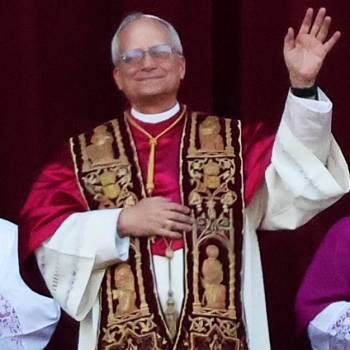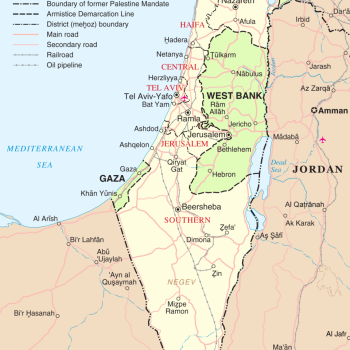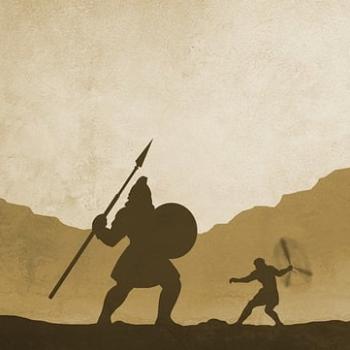Eric Elnes writes in his book, Gifts of the Dark Wood (see here), about “an ancient sacred well in Ireland where Saint Patrick is said to have visited.” Coming from my funda-gelical background, the idea of “sacred” spaces or geographical locations smacks of superstition. Of course, I’m not superstitious, but I am a little “stitious” (sorry, a Michael Scott reference–I had to). In the FG world, any emphasis as to the sacredness of a place is put on God’s presence. Thus, wherever God is, there is the sacred, and God is everywhere, so… In such an understanding, what too often happens is the sacredness of everything ends up meaning, nothing is sacred, as it swallows up the immanent and leaves only transcendence. Sacredness then becomes something “out there” or something abstract, rather than a physical thing, or a place, we can see, touch, taste, hear, and smell.
In reference to that sacred well, Elnes cites a poem entitled “Tobar Phadraic,” which means “Patrick’s well.” In the poem, there is a reference to turning, “Turn sideways into the light as they say the old ones did…” Elnes goes on to write:
“As Whyte [the poem’s author] explains it, the concept of turning sideways into the light is a reference to a mythological people called the Tuatha De Danann in Irish lore. As he explains it, they were a small, somewhat fragile, but immensely magical people who lived in Ireland before the arrival of human beings (probably the predecessors of leprechauns in Irish mythology). With the coming of humans, the Tuatha De Danann became agitated, as they found humanity’s ways coarse and barbaric. Being a gentle people, they chose not to oppose humans. Rather, at one point, they are said to have simply “turned sideways into the light and disappeared.”
This turning sideways into the light made me think of “thin places” (see here and here) a concept normally associated with the Christian Celtic tradition. Timothy George explains it thus:
“Sites like Skellig Michael are called “thin places” by the Irish. Thin places—not because the air is rarified, or the land is narrow but because the distance between heaven and earth shrinks, and time and eternity embrace. A thin place is where the veil between this world and the next is lifted for a moment, and it may be possible to get a glimpse of what one’s life is all about—perhaps of what life itself is all about.”
The Christian faith is a mystical faith. It is not really a religion or theological framework. It’s not an abstract philosophical summation. We use theological and philosophical language in discussing the Christian faith, out of a necessary weakness, but what we are discussing (while we are hopefully living it) is a mystical faith that speaks of sacred places, thin places, places where turning a certain way can transform one’s vision, one’s life.
We pray for the Kingdom to come, on earth. We see the heavenly city descending to earth. We see in Christ both the human and divine. This makes the soil along with the stars, sacred. This also allows for a specificity however. Jesus, while upon the earth in flesh, did not walk the entire earth. The burning bush appeared in one earthly place, one bush, one piece of ground. And there is a well in Ireland. To say a specific place is sacred or “thin” isn’t to say all creation is less in some way. It is only to say that the divine does indeed touch the earth, the wind, the water, and the fire in general, in creation, but also with specificity. And since the Spirit blows where he will, lands in tongues of fire, since Sophia, in wisdom, hovers over the waters, since there is this movement of wind and of fire, there can certainly be sacred places and the possibility of transfiguration, where heaven and earth meet.
The world is more mysterious, mystical, and surprising than we can fathom as Hamlet told us. The FG mind sees a world that is plain, flat, obvious, black and white, mathematical, and literal. The world however is a deeply layered poem written with a pen dipped in blood drawn from a well of unending love. And in such a world there is room enough for the Tuatha D Danann, thin places, sacred wells, and people coming and going, turning, first here and now there. Turning, always turning.
TOBAR PHADRAIC
Turn sideways into the light as they say the old ones did and disappear into the originality of it all. Be impatient with explanations and discipline the mind not to begin questions it cannot answer. Walk the green road above the bay and the low glinting fields toward the evening sun.
Let that Atlantic gleam be ahead of you and the gray light of the bay below you, until you catch, down on your left, the break in the wall, for just above in the shadow you’ll find it hidden, a curved arm of rock holding the water close to the mountain, a just-lit surface smoothing a scattering of coins, and in the niche above, notes to the dead and supplications for those who still live.
Now you are alone with the transfiguration and ask no healing for your own but look down as if looking through time, as if through a rent veil from the other side of the question you’ve refused to ask and remember how as a child your arms could rise, and your palms turn out to bless the world.
~ David Whyte ~















